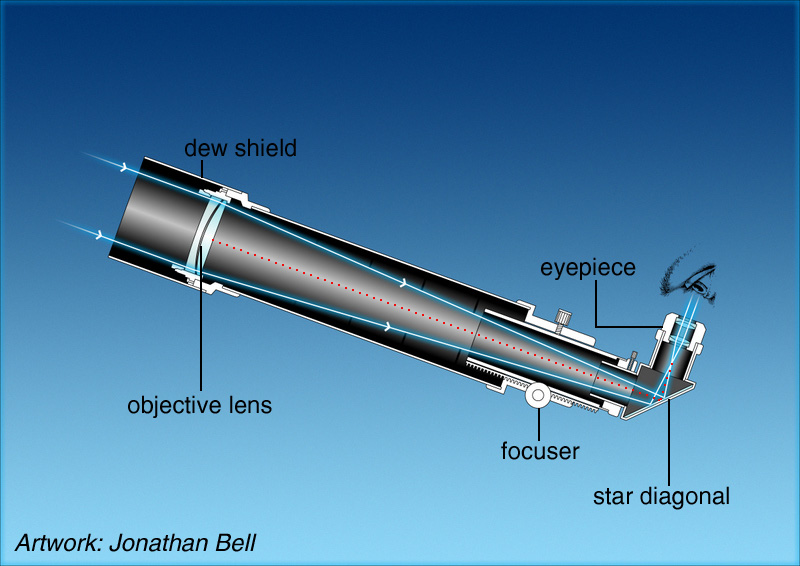
A refracting telescope is a type of optical telescope that uses a lens to gather and focus light. The first refracting telescopes were built in the 17th century, and they remain popular instruments for amateur astronomers and professionals alike.
Refracting telescopes are often called refractors, and they come in a variety of designs, including achromatic refractors, apochromatic refractors, and doublets. Most refractors have an objective lens made of glass, but some use plastic or even metal.
The two most important factors in a refractor’s performance are its aperture (the diameter of the lens) and its focal length (the distance from the lens to the point where the image is brought into focus). A larger aperture allows more light to enter the telescope, which results in a brighter image. A longer focal length results in a higher magnification.
Refracting telescopes are limited by a phenomenon called chromatic aberration, which is caused by the different wavelengths of light being refracted (bent) by different amounts as they pass through the lens. This results in an image that is not perfectly sharp and may appear to be surrounded by a halo of color. Chromatic aberration can be minimized by using an achromatic lens, which is made of two or more lenses of different materials that cancel out each other’s aberrations.
Apochromatic refractors use special glass lenses that are nearly free of chromatic aberration. These telescopes are expensive, but they provide the best image quality of any type of telescope.
Doublets are two lenses mounted in a single barrel. They are less expensive than apochromats, and they typically have very good image quality.
Refracting telescopes require more maintenance than other types of telescopes, because the lenses must be regularly cleaned and aligned. They are also more susceptible to dew and condensation than other types of telescopes, so they must be kept in a dry environment. But despite these drawbacks, refractors remain popular among amateur astronomers and professionals alike for their excellent image quality.
Advantages of using a refracting telescope
There are several advantages to using a refracting telescope:
– The image quality is typically very good, due to the lack of optical aberrations.
– They are relatively easy to align and maintain.
– They are less susceptible to dew and condensation than other types of telescopes.
Disadvantages of using a refracting telescope
There are also some disadvantages to using a refracting telescope:
– They are more expensive than other types of telescopes.
– They require more maintenance, as the lenses must be regularly cleaned and aligned.
– They are more susceptible to dew and condensation than other types of telescopes.
Who should use a refracting telescope?
Refracting telescopes are a good choice for anyone who wants a high-quality image and is willing to pay a bit more for it. They are also a good choice for anyone who wants a relatively easy-to-use and easy-to-maintain telescope. However, they are not the best choice for anyone who wants a telescope that is portable or easy to set up.
Where can you find a refracting telescope?
Refracting telescopes are available for purchase from a variety of retailers, both online and offline. You can also find them at some science museums and planetariums.
How much does a refracting telescope cost?
Refracting telescopes can range in price from a few hundred dollars to several thousand dollars, depending on the quality of the optics and the size of the telescope.
What are some of the best-known refracting telescopes?
Some of the best-known refracting telescopes include the Hubble Space Telescope, the James Webb Space Telescope, and the Keck Observatory Telescopes.